Untitled Critical Object
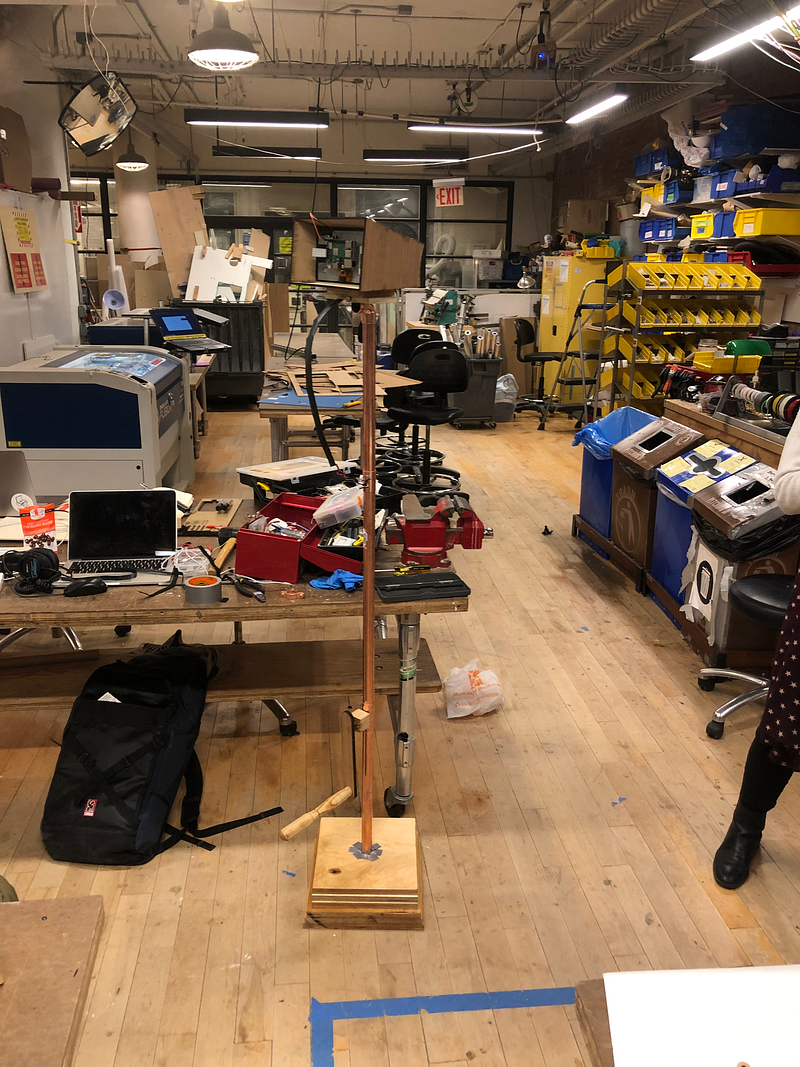
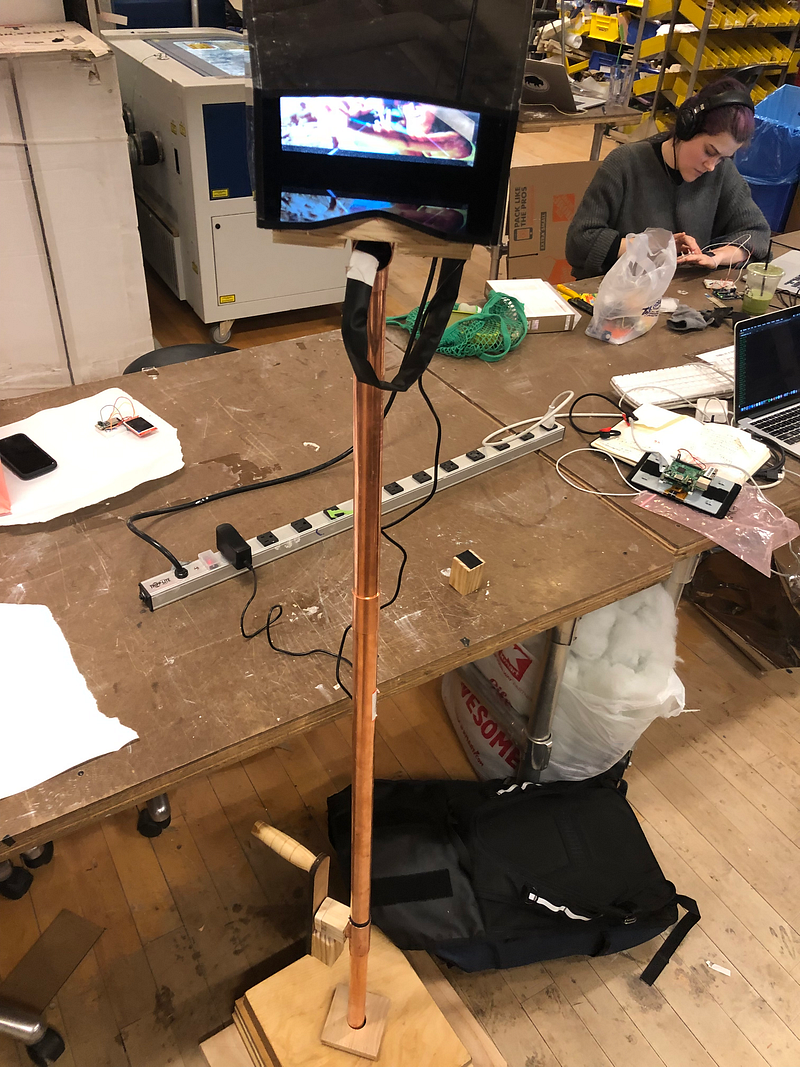
Sukanya and I have been working on a project on the subject of digital colonialism that is currently untitled. We were assigned three constraints:
Device: metaphor
Mood: weirdness
Attribute: collaborative
We decided pretty quickly on a rough sketch of an idea: a VR-style headset that’s powered by physical labor to represent the unseen labor that goes into making the internet “pleasant” or at least preventing truly horrifying content from entering your social media bubble.
The idea that we settled on is a crank-powered video run on a raspberry pi. One person, the “laborer”, turns the crank while the other looks into the headset, obscuring the laborer from their view. The video playing is initially wildly unpleasant — if the laborer works quickly enough, however, the video transitions into soothing images of new technology and beloved brands.
We’d like to do some more work on the video to force the “laborer” to keep working at all times, possibly by including individual frames of unpleasant content that are only visible at low speeds.
Building
We decided on our materials fairly quickly.
The handle itself would be wooden, which we’d turn on the wood lathe: this symbolizes the human, classical labor that goes into the root of the greater structure.
For the frame we chose copper, both for its aesthetic qualities and its symbolic nature as one of the fundamental building blocks of the physical infrastructure of the internet.
The headset is made out of black acrylic, a shiny and somewhat soulless material that represents the end product of all this invisible technological labor.
We started by writing the initial code and testing on a Rasberry Pi and Pi screen to ensure everything would work, which it did. We used OMXPlayer and OMXPlayerWrapper and a python script to take input from a rotary encoder to control video play speed.
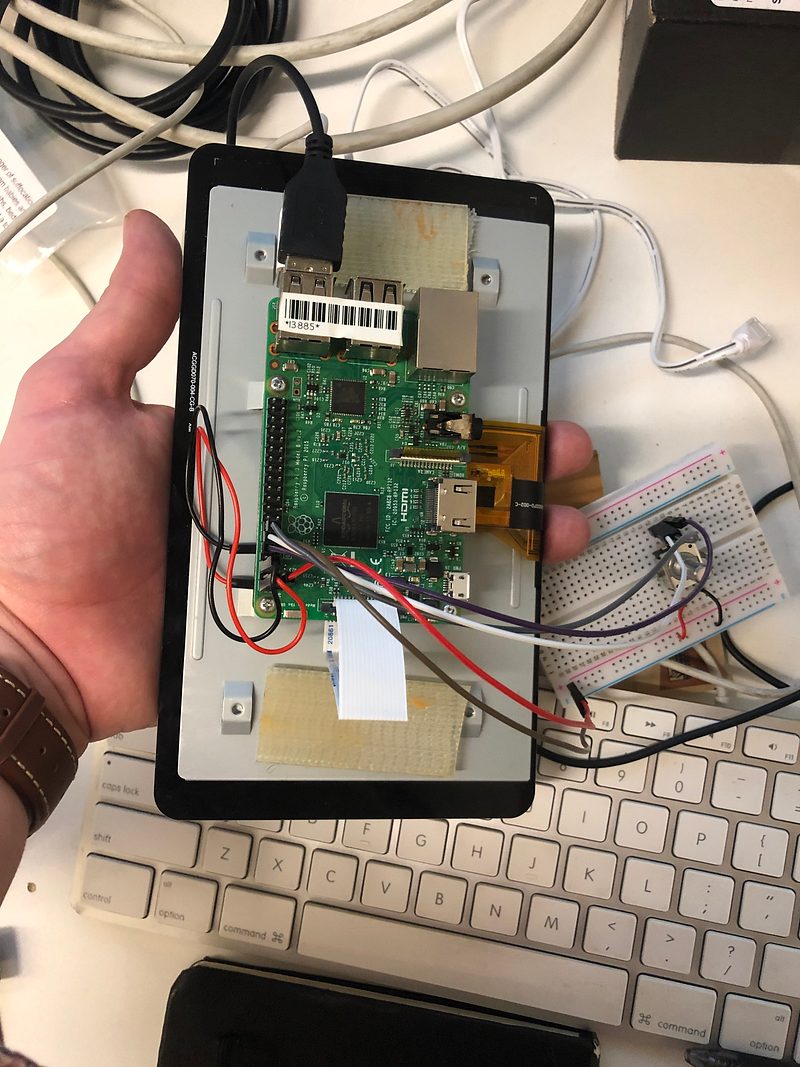
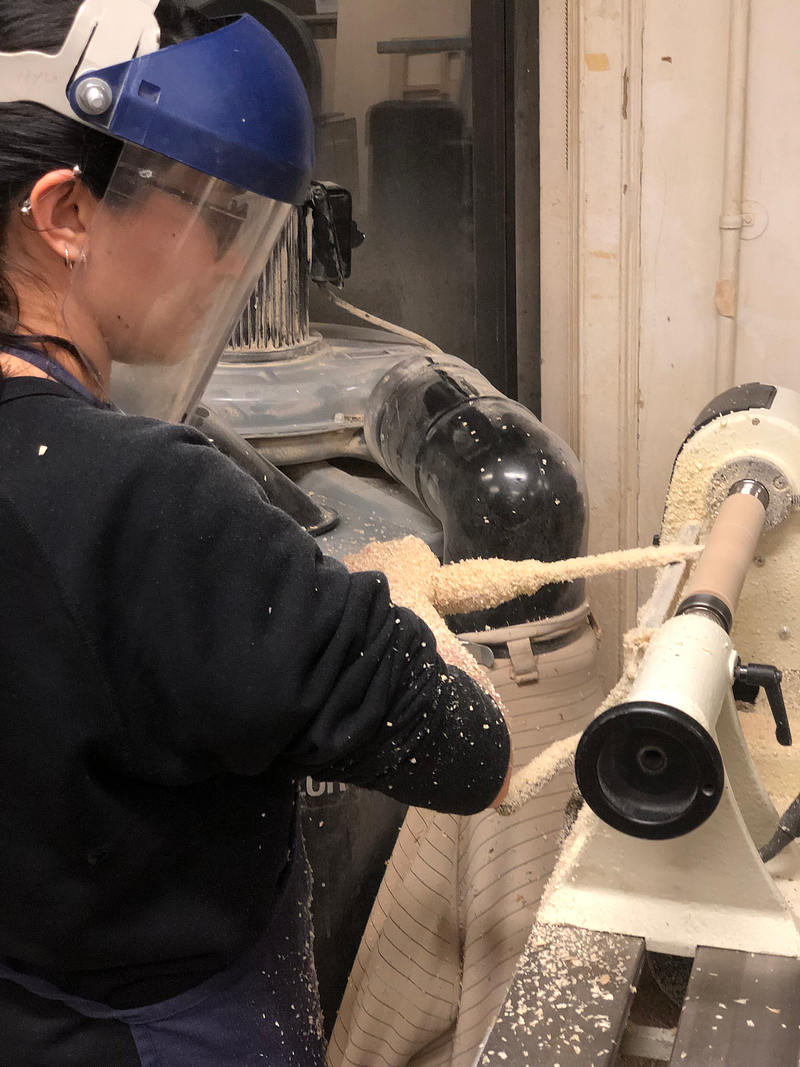
We then went out and bought the materials we’d need to build the rest of the frame — copper tubing, acrylic sheets, and plywood.
We then built a cardboard prototype in class to test the sizing/interaction, which helped us figure out the relevant heights and setup.
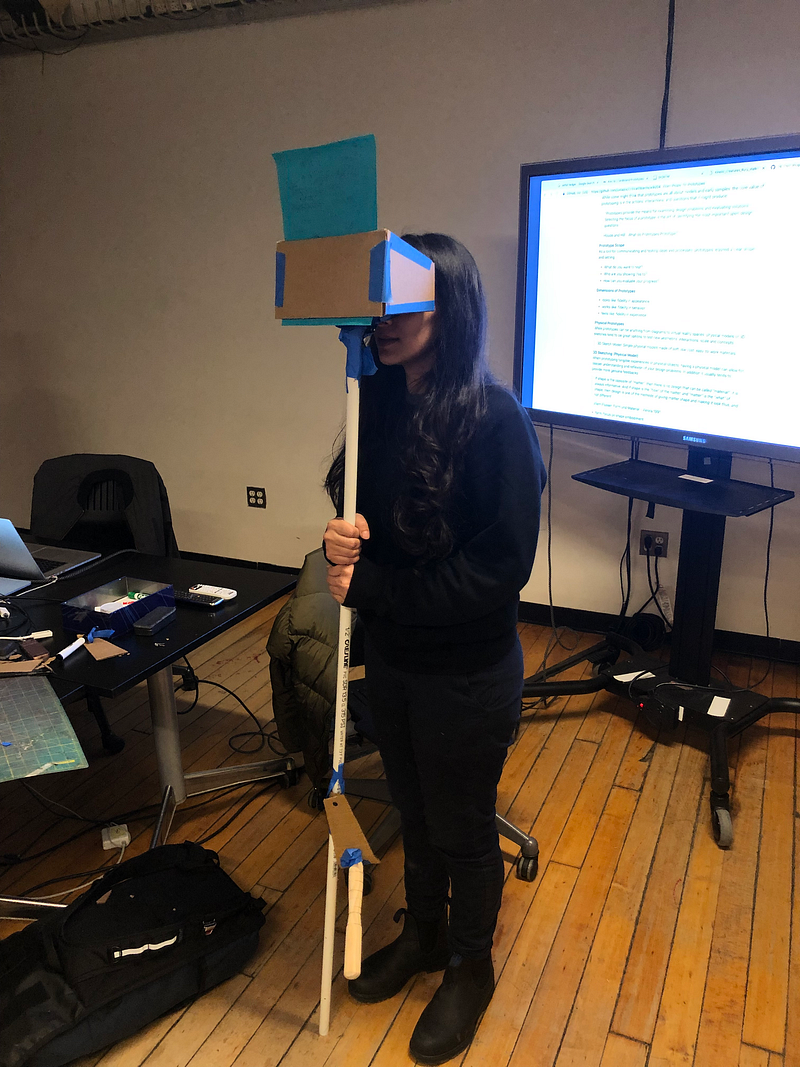
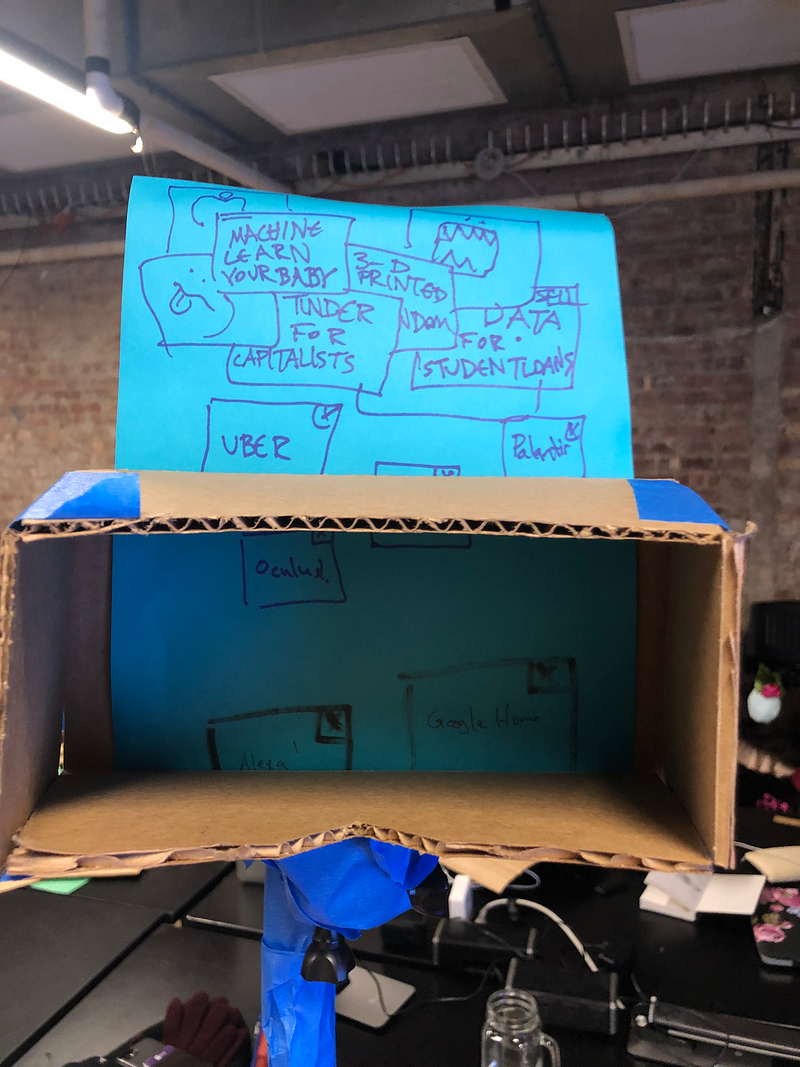
From there, we got to assembling the final product:
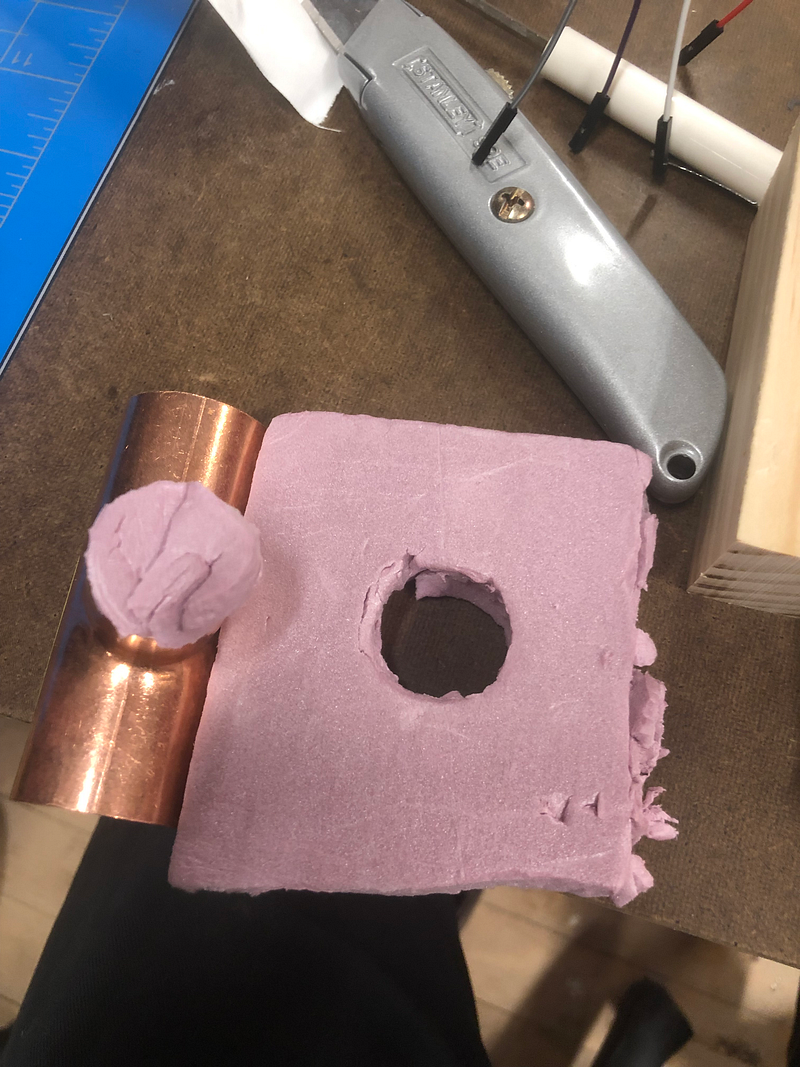
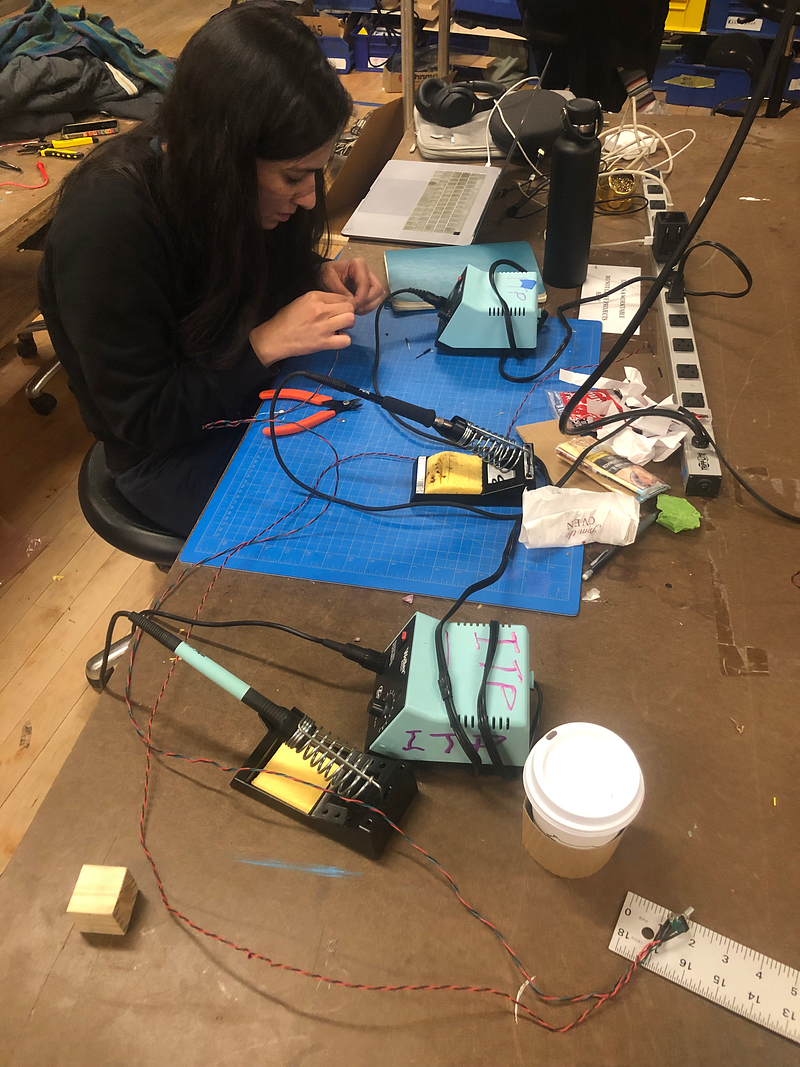
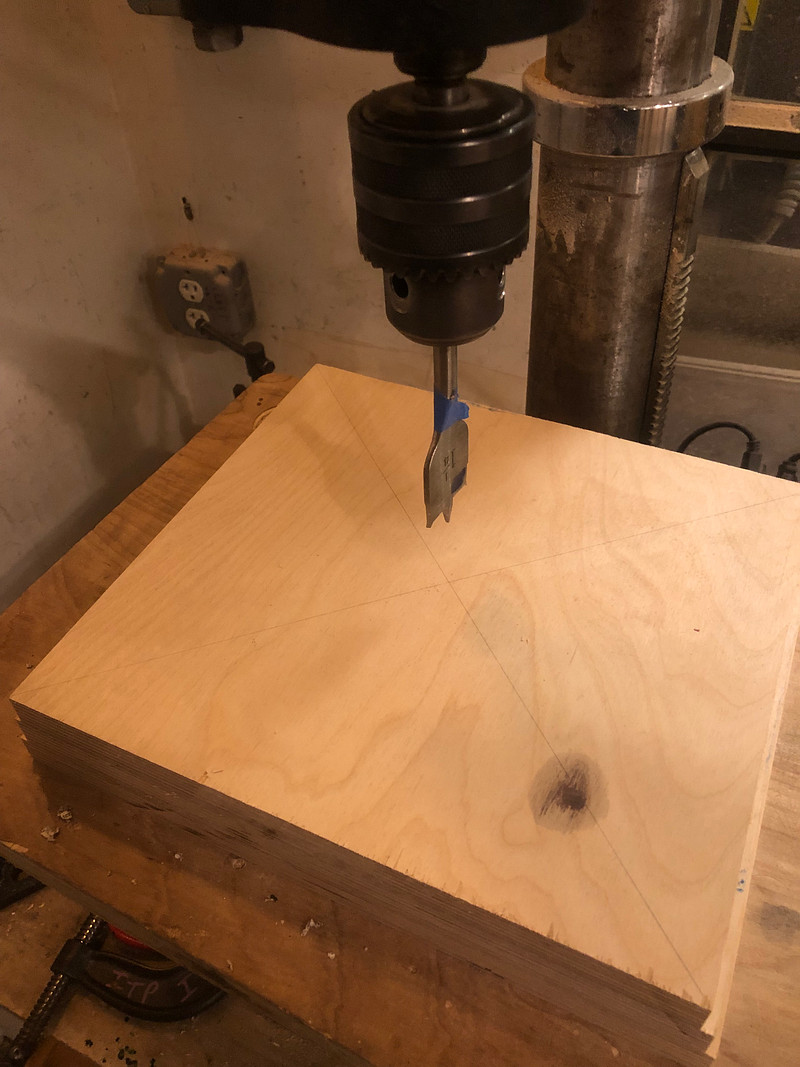
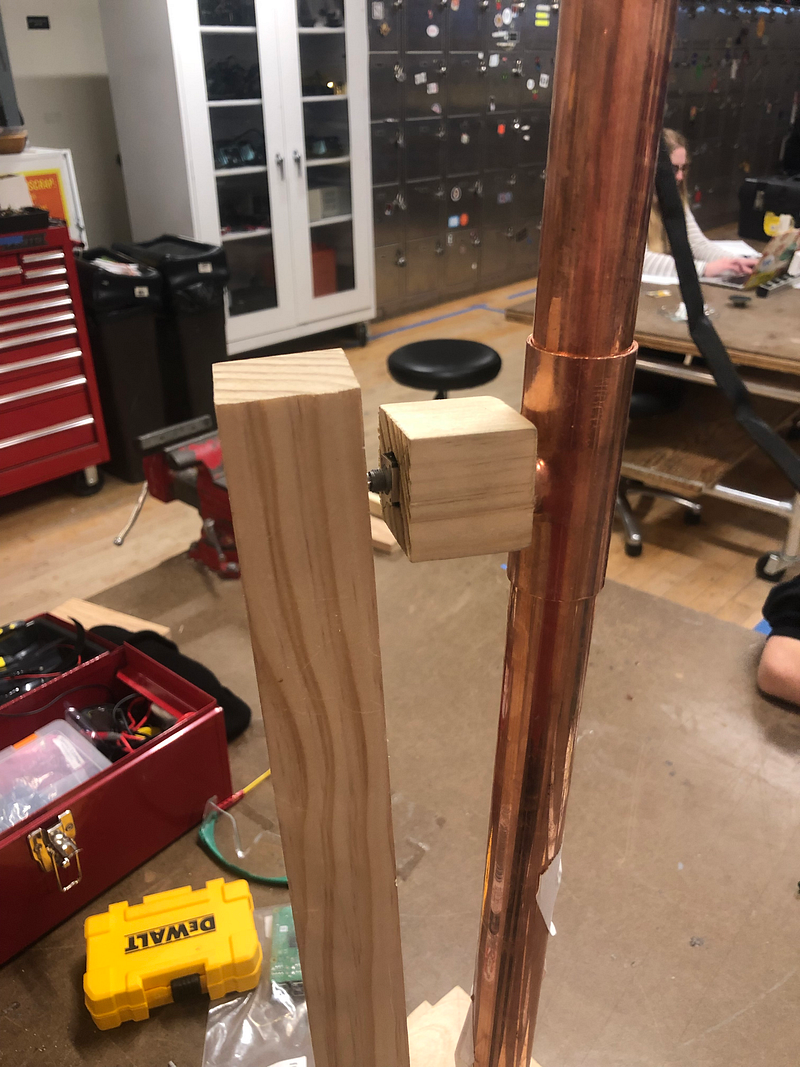
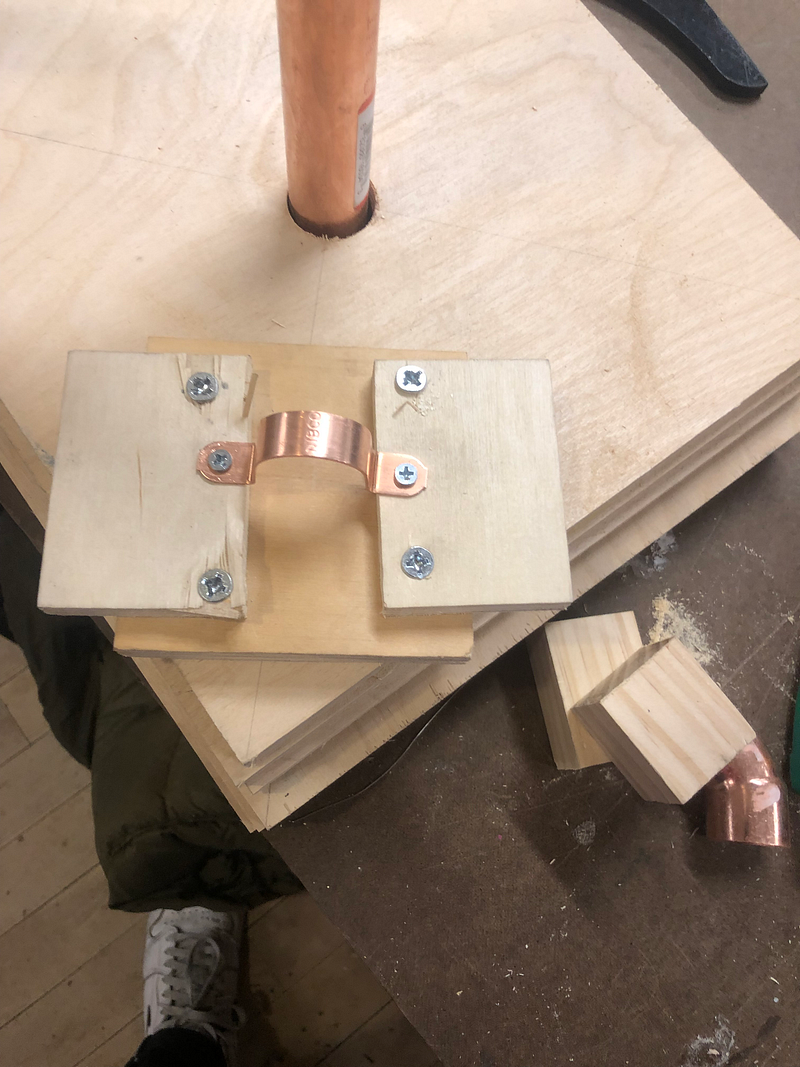

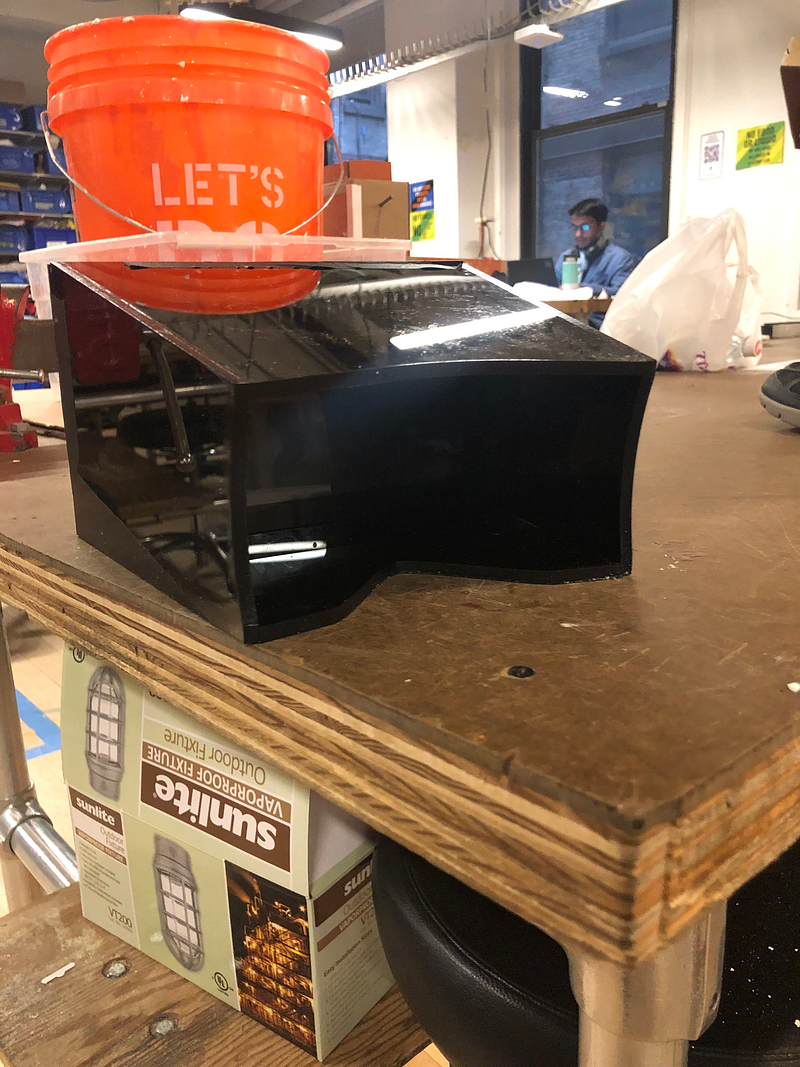
We’re still working on putting the finishing touches together, but hopefully this gives some idea of where we’re at.